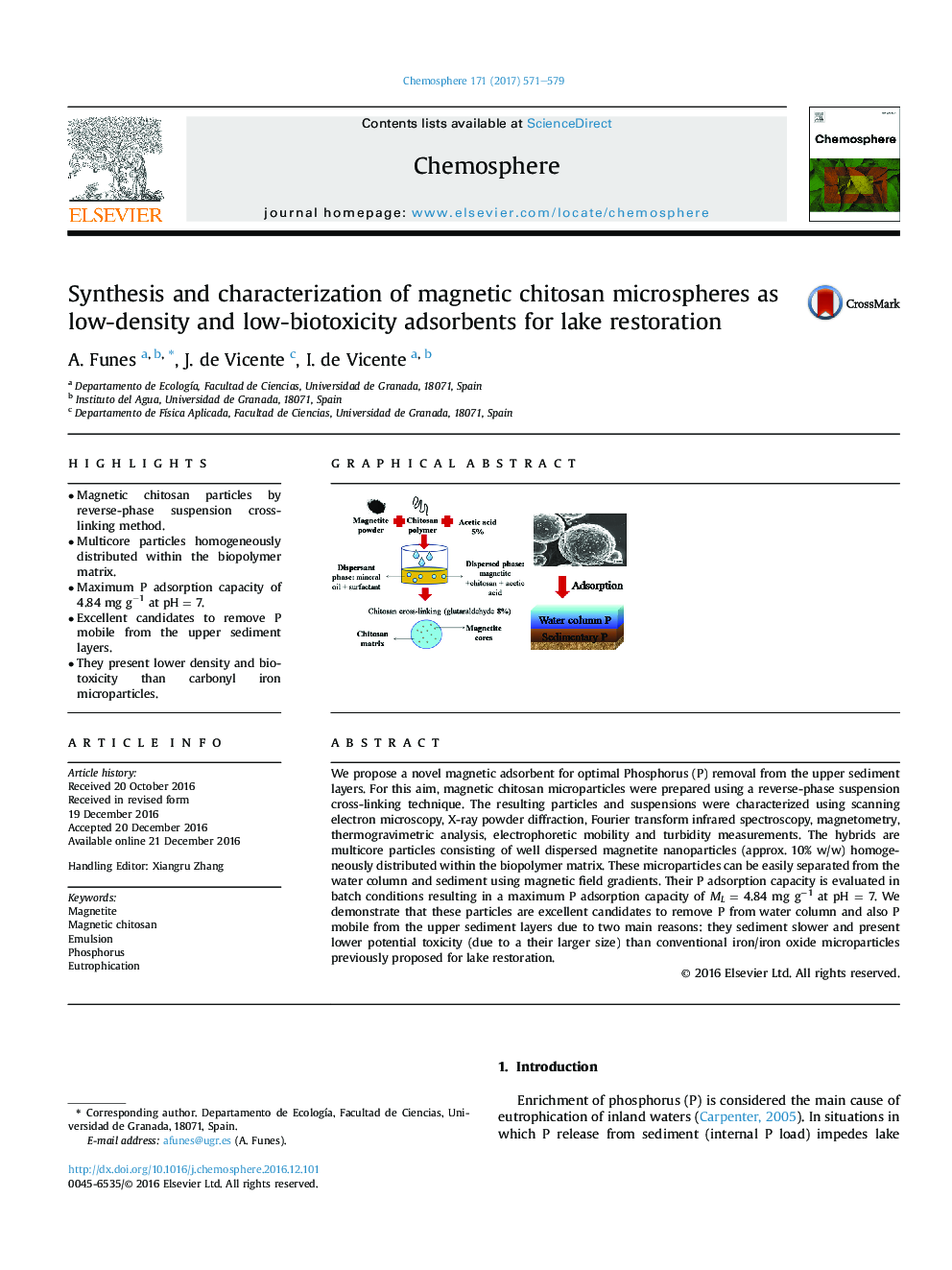| Article ID | Journal | Published Year | Pages | File Type |
|---|---|---|---|---|
| 5746397 | Chemosphere | 2017 | 9 Pages |
â¢Magnetic chitosan particles by reverse-phase suspension cross-linking method.â¢Multicore particles homogeneously distributed within the biopolymer matrix.â¢Maximum P adsorption capacity of 4.84 mg gâ1 at pH = 7.â¢Excellent candidates to remove P mobile from the upper sediment layers.â¢They present lower density and biotoxicity than carbonyl iron microparticles.
We propose a novel magnetic adsorbent for optimal Phosphorus (P) removal from the upper sediment layers. For this aim, magnetic chitosan microparticles were prepared using a reverse-phase suspension cross-linking technique. The resulting particles and suspensions were characterized using scanning electron microscopy, X-ray powder diffraction, Fourier transform infrared spectroscopy, magnetometry, thermogravimetric analysis, electrophoretic mobility and turbidity measurements. The hybrids are multicore particles consisting of well dispersed magnetite nanoparticles (approx. 10% w/w) homogeneously distributed within the biopolymer matrix. These microparticles can be easily separated from the water column and sediment using magnetic field gradients. Their P adsorption capacity is evaluated in batch conditions resulting in a maximum P adsorption capacity of ML = 4.84 mg gâ1 at pH = 7. We demonstrate that these particles are excellent candidates to remove P from water column and also P mobile from the upper sediment layers due to two main reasons: they sediment slower and present lower potential toxicity (due to a their larger size) than conventional iron/iron oxide microparticles previously proposed for lake restoration.
Graphical abstractDownload high-res image (213KB)Download full-size image
